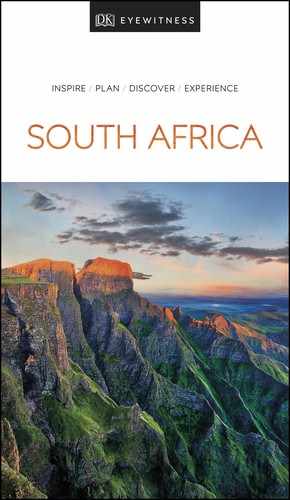FIELD GUIDE conservation
conservation
Despite the relative profligacy of wildlife in South Africa’s national parks and other protected areas, a considerable portion of the country’s bio-diversity was lost during three centuries of European settlement. A series of conservation measures introduced since the turn of the 20th century have brought about an amazing recovery, and today South Africa’s wildlife reserves are among the finest in the world.
Before the arrival of the white colonists, the nomadic Khoisan hunted wild animals for food, while to the east, Zulu and Venda traded in ivory and organized ceremonial hunts – but their spears and pitfall traps had little impact. When Europeans arrived on the scene in the 17th century, South Africa’s wildlife seemed inexhaustible. By the mid-19th century, however, the settlers – with their deadly weapons – had seen to it that the vast herds had disappeared. The sable-like bluebuck and zebra-like quagga that once roamed the fynbos-strewn slopes of the Western Cape were hunted to extinction, as was the Cape lion, a subspecies of lion with a distinctive black mane. Populations of big game were decimated, and many animal species were in danger of dying out.
The First Wildlife Reserves
As towns expanded, people began to view wildlife as an asset, and in 1889, the Natal Volksraad (people’s council) agreed to establish a wildlife reserve. In 1894, a strip of land between KwaZulu-Natal and Swaziland became the Pongola Game Reserve, Africa’s first conservation area. In 1898, President Paul Kruger signed a proclamation establishing the forerunner of a sanctuary that was later named Kruger National Park in his honour.
Conservation Today
The conservation ethic that now prevails in South Africa is generally well-managed and forward-thinking, but the scourge of poaching and inevitable habitat loss caused by an expanding human population remain real concerns. Nonetheless, there have been several success stories, including the resurgence of once-dwindling populations of bontebok, Cape Mountain zebra and white rhino following these species’ protection within national parks and game reserves.
A key aspect of conservation work in national parks such as Kruger is managing for diversity. Scientists are only now beginning to understand the complicated ecosystem of the African savannah, and are making careful efforts to manage it in a way that maintains the habitat’s diversity – such as closing artificial water points, which caused habitat-modifiers such as elephants to flourish (to the detriment of other species). Additionally, radio tracking enables scientists to monitor endangered predators, providing important data about factors that affect their survival.
IUCN Red List
The International Union for Conservation of Nature (IUCN) Red List of Threatened Species assesses the extinction risk of a plant or animal. The categories are:
Extinct (EX) – No individuals known to survive eg bluebuck.
Extinct in the Wild (EW) – Survives only in captivity or as an introduced population outside its natural range.
Critically Endangered (CE) – Extremely high risk of extinction in the immediate future eg black rhino.
Endangered (EN) – Very high risk of extinction within the foreseeable future eg African wild dog.
Vulnerable (VU) – Significant medium-term risk of extinction eg lion.
Least Concern (LC) – No significant risk of extinction at present eg impala.
Data Deficient (DD) – Insufficient information available for assessment.
FIELD GUIDE conservation

t Protected bontebok.
